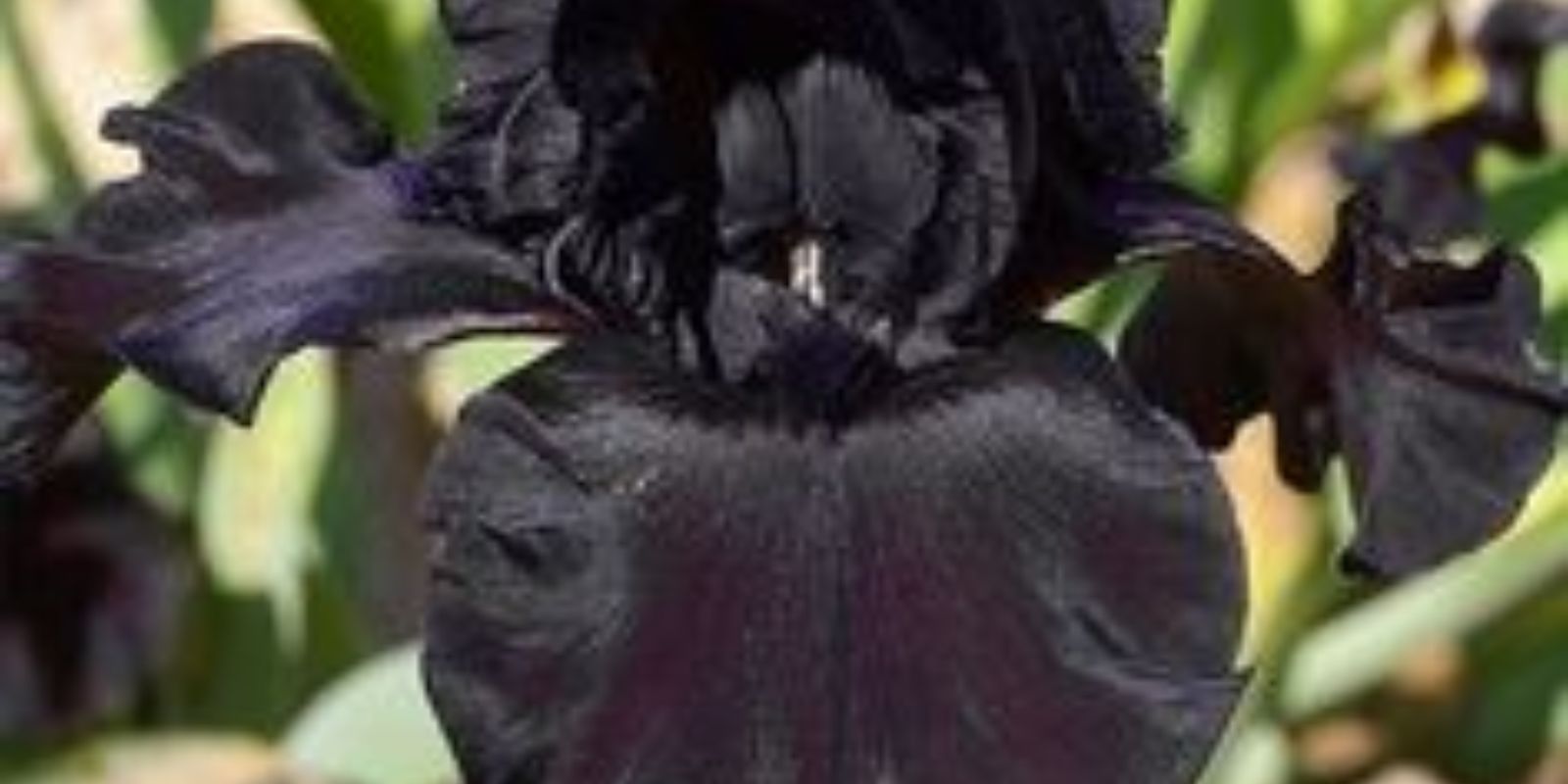Introduction: Exploring the Enigmatic Beauty of Black Iris
Black Iris (Iris germanica) stands as a symbol of elegance and sophistication in the world of garden flowers. With its mesmerizing, velvety blooms in shades ranging from deep purples to almost black, this iris cultivar captivates gardeners and enthusiasts alike with its unique charm and striking appearance. Cultivating Black Iris in your garden not only enhances its visual appeal but also invites you to delve into the art and science of growing these exquisite flowers. This article delves deep into the fascinating realm of Black Iris cultivation, offering insights, practical tips, and essential guidelines to help you successfully nurture and enjoy these captivating blooms.
1. Understanding Black Iris (Iris germanica): Botanical Insights
Black Iris, scientifically known as Iris germanica, belongs to the genus Iris within the Iridaceae family. Originating from regions across Europe, the Mediterranean, and the Middle East, Iris germanica has been cultivated for centuries, resulting in a wide array of cultivars cherished for their ornamental value. What sets Black Iris apart is its luxurious, dark-colored petals, often accented with intricate veining and contrasting highlights. These attributes make Black Iris a sought-after choice for gardeners looking to add depth and sophistication to their landscape.
2. Selecting the Right Variety of Black Iris
Choosing the appropriate variety of Black Iris is crucial to ensure successful cultivation and optimal performance in your garden:
- Color Palette: Explore different cultivars to find the shades of dark blooms that best complement your garden’s aesthetic, whether you prefer deep purples, velvety burgundies, or nearly black hues.
- Climate and Growing Conditions: Consider the specific climate requirements of each cultivar. While most Black Iris varieties thrive in full sun to partial shade, some may have preferences for soil type and moisture levels.
- Height and Flower Form: Select cultivars based on their growth habits, including height and flower form, to suit your garden layout and design preferences.
3. Essential Steps for Growing Black Iris
To cultivate healthy and vibrant Black Iris plants, follow these essential steps tailored to their specific needs:
a. Planting Black Iris:
- Timing: Plant Black Iris rhizomes in late summer to early fall or in early spring to allow them to establish roots before the growing season begins.
- Site Selection: Choose a well-drained location with full sun to partial shade. Black Iris thrives in soil that is rich in organic matter and slightly acidic to neutral in pH.
- Soil Preparation: Prepare the planting site by incorporating compost or organic matter to enhance soil fertility and improve drainage.
- Planting Depth: Dig shallow holes for each rhizome, spreading the roots outward and covering them with a thin layer of soil. Space multiple rhizomes at least 12 inches apart to allow for future growth.
b. Watering and Moisture Management:
- Watering Regimen: Water newly planted Black Iris deeply to settle the soil around the rhizomes. Throughout the growing season, maintain even moisture levels, ensuring the soil remains consistently moist but not waterlogged.
- Mulching: Apply a layer of organic mulch around the base of the plants to retain moisture, regulate soil temperature, and suppress weed growth. Replenish mulch as needed to maintain a consistent layer.
c. Fertilizing Black Iris:
- Fertilization Schedule: Apply a balanced fertilizer designed for flowering bulbs in early spring as new growth emerges. Repeat fertilization after flowering to support plant vigor and encourage continuous blooming.
- Avoid Over-Fertilization: Use fertilizers according to package instructions to prevent excessive foliage growth at the expense of blooms. Monitor plant response and adjust fertilizer applications as necessary.
d. Pruning and Maintenance:
- Deadheading: Remove spent flowers promptly to promote prolonged blooming and prevent seed formation. Trim back flower stalks and damaged foliage throughout the growing season to maintain plant health and appearance.
- Division: Every few years, divide overcrowded clumps of Black Iris rhizomes in late summer or early fall to rejuvenate plants and promote better flowering.
4. Special Care Considerations for Black Iris
- Pest and Disease Management: Monitor Black Iris plants for common pests such as iris borers, aphids, and slugs. Employ integrated pest management strategies or use organic controls to mitigate pest damage.
- Disease Prevention: Ensure adequate air circulation around plants and avoid overhead watering to minimize the risk of fungal diseases such as iris leaf spot or root rot.
- Winter Protection: In regions with harsh winters, apply a thick layer of mulch around Black Iris rhizomes in late fall to insulate them from freezing temperatures. Cut back foliage after frost to prepare plants for dormancy.
5. Enjoying the Rewards of Black Iris Cultivation
- Blooming Season: Celebrate the beauty of Black Iris blooms, which typically grace the garden from late spring to early summer, depending on the cultivar and local climate conditions.
- Landscape Versatility: Incorporate Black Iris into various garden settings, including borders, rock gardens, and containers. Their bold color and graceful form serve as focal points and add depth to garden designs.
- Community Engagement: Connect with fellow gardeners and iris enthusiasts to share experiences, exchange tips, and celebrate the timeless elegance of Black Iris in gardens worldwide.
Motivation to Interact:
Embark on an enriching journey into the captivating world of Black Iris cultivation and join a vibrant community of gardening enthusiasts passionate about these exquisite flowers. Whether you’re inspired by their dark and mysterious blooms or eager to enhance your gardening skills, growing Black Iris offers a rewarding experience filled with beauty, discovery, and connection. Let’s explore, learn, and celebrate the timeless allure of Black Iris together in our gardens!

